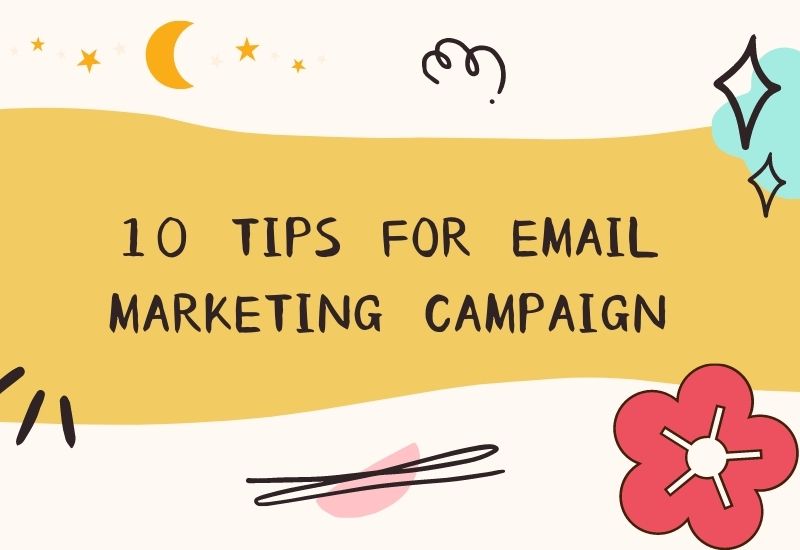A long time ago, email has been one of the ways to exchange information. Is the email marketing campaign still effective? Yes, it is. With so many users sending emails every day, the competition for attention is now quite fierce. That’s why you should be fully aware of what makes an effective campaign and how to make it successful in the end.
An email marketing campaign is a letter written by a certain company to one or several customers or prospects. It can be called successful if the recipient starts taking action, is interested in your business, and helps you to increase your sales. There are many effective tips on how to fix your email marketing strategy. You can easily gain the knowledge and put it to use. But is this game worth the candle? What are the benefits of email marketing? There are many, but most importantly, it is popular with users despite the fact that modern technology offers many other new options for people. According to Statista, the number of email users will even grow to more than 376 billion in 2025. Now you can see that email marketing seems to be a great tool for building effective customer relationships and generating more sales.
10 Steps to an Effective Email Marketing Campaign
To understand the path to developing an effective marketing campaign, you should be prepared to do some preparatory work.
1. Understand your objectives
Effective marketing always starts with understanding and stating your goals. It is critical to clarify your long-term goals. Some of the common goals are
- Attract new subscribers
- Increase customer engagement
- Re-engage existing subscribers
- Segment subscribers
- Provide customers with important information
2. Build a targeted email list
It is impossible to imagine a good campaign without a targeted email list. In order to build it, you should convert your website visitors into subscribers. Unfortunately, most people quit the site without signing up for your newsletter. That’s why it is recommended to use pop-ups and offer such an option to everyone who is interested in your company. Eventually, you will receive a list of potential customers and start providing them with the latest news and offers.
3. Understand email types
Once you have a clear base of available customers and prospects, you can send them emails. Before doing so, however, you should understand what types of emails are available and which ones are better suited to your current goals.
- Promotional. They are self-promotional and talk about current hot offers, sales and discounts.
- Transactional. These are emails that are usually triggered by a person’s action on the site. For example, order or purchase confirmation, welcome message, etc.
- Relational. They should be giving the person what you promised before. For example, a gift, an interesting newsletter, etc.
How do you send an effective email? You should understand what types of emails will help you achieve your goals and work on their content.
4. Know your audience
If you entered the market some time ago, you probably know your target audience. However, if you started recently, then you are at the very beginning of understanding your audience. The good news is that specialized tools are available to help you do this quickly and effectively. Google Analytics, for example. It involves location, demographics, interests, and a host of other metrics. It’s a great starting point for building effective marketing campaigns.
5. Use technology wisely
Top email marketing services come equipped with a variety of tools designed to help you create a successful campaign and achieve success. Check the availability of the service you want to choose.
- Options for segmenting your target audience
- Easy integration with the software you are using
- Templates prepared for better automation
- In-depth analytics
6. Create unique options
Obviously, building a successful campaign requires having an email list of potential customers. This is where you need to create unique forms that will grab their attention. Use various types of opt-in forms and experiment with their placement on your website, including.
- Lightbox pop-ups
- Welcome Doors
- The opt-out intent pop-up window
7. Plan your emails
Once you know your goals and have a list of people ready to attract with your opt-in items, you can start planning your marketing campaign. Consider this list to help you understand the main ideas for your future planning.
- Email Frequency
- Email Type
- Content ideas
Actions you want the person to take (become your follower on social media, join a specific campaign, etc.) After making sure you have data on all these points, go ahead and produce the text.
8. Prepare a copy
The first thing your subscribers will see is the subject line. Based on it, they will decide whether to open the letter or not. Simply put, it must grab their attention and encourage them to read the letter. Avoid adding spammy phrases/words. Finally, make a copy with a call to action.
9. Focus on design
Design can work for you or it can stop people from reading your emails. That’s why you should work hard on this. Since most people use mobile devices to read emails, you should be concerned about resizing. It is better to add more text rather than images.
10. Testing and tracking
The final step is to send your emails and collect data. You can’t be sure your campaign is right if you don’t know how it’s going. Test everything, from the design to the time you sent the letter. Use analytics tools to find out the number of subscriptions, clicks, etc. Writing assignments is the best way to reach your goals.
In Conclusion
How do you create an effective email marketing campaign? You should make sure that you understand what it is and its main peculiarities. By following all the above steps, your path to a successful campaign will be easier and more effective.

